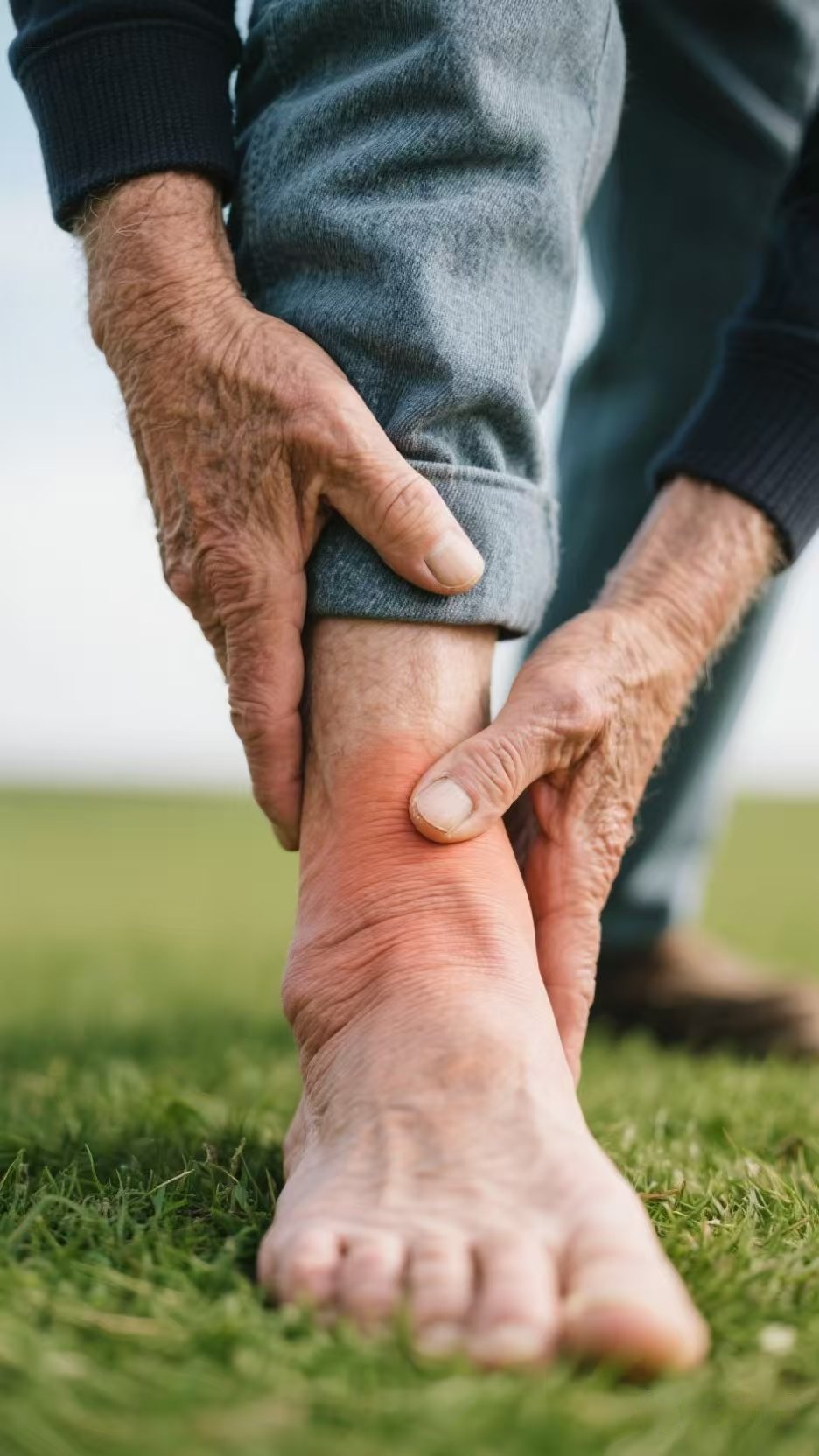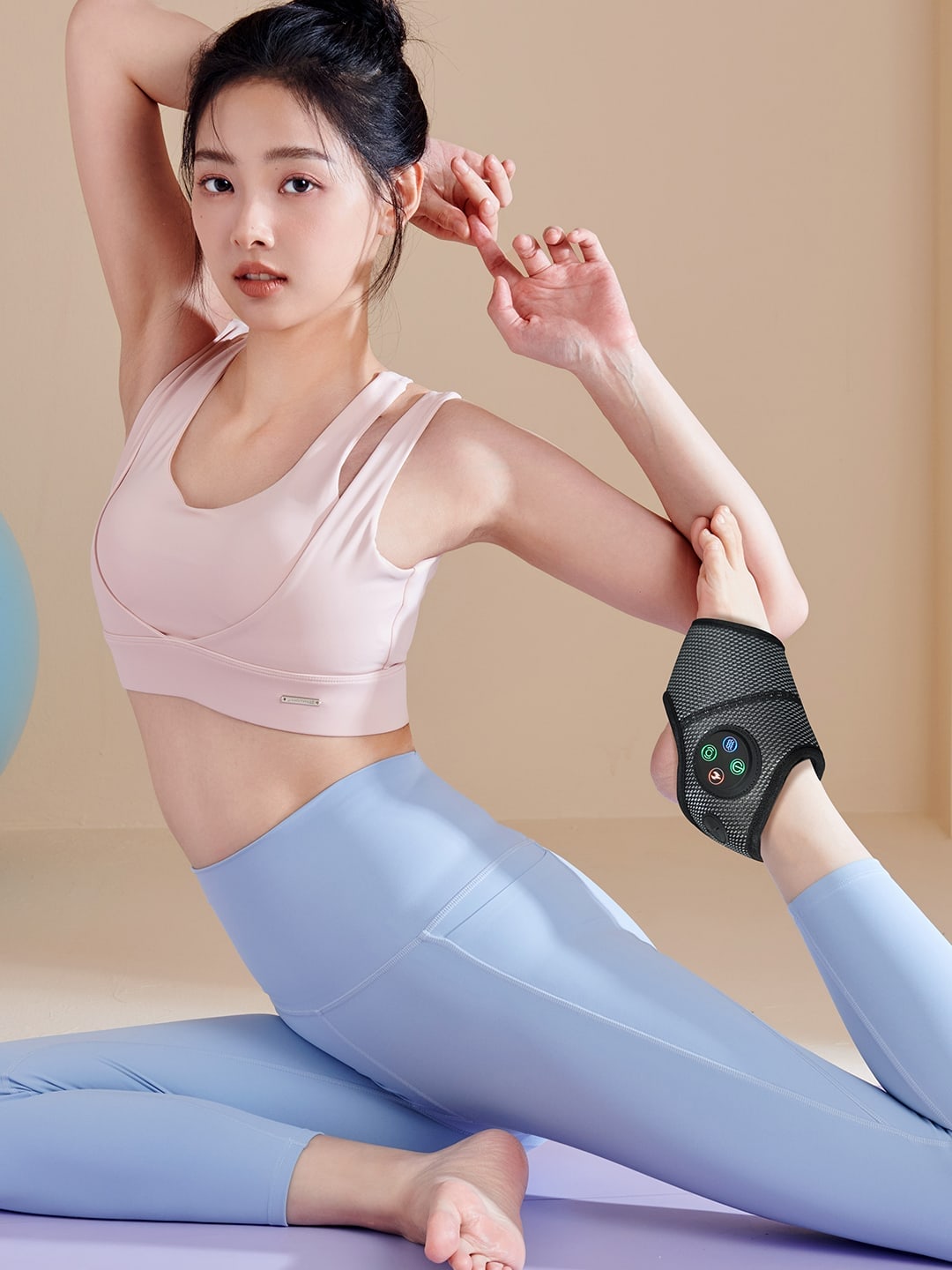Are Foot and Leg Massagers the Secret to SingPost Fatigue?
- By Grace
- Updated on
After a long day, whether you've been pounding the pavement delivering mail or pushing your limits on the running track, that familiar ache in your feet and legs can feel like an unwelcome guest. For many, the idea of quick relief is incredibly appealing. But when it comes to battling occupational fatigue or post-workout exhaustion, are modern gadgets like a foot and leg massager truly effective, or is there more to the story? We’re diving deep into this question, particularly for those whose livelihoods or passions depend on their lower body stamina.
I hear you, you've probably tried everything from elevation to cold packs. The promise of an effortless recovery tool sounds almost too good to be true, doesn't it? As someone who constantly explores ways to enhance well-being and optimize recovery, I’ve found this topic resonates deeply with anyone pushing their physical boundaries. Let's unpack the science and practicalities behind integrating a foot and leg massager into your routine to truly conquer that stubborn fatigue.
What Happens When Occupational Fatigue Strikes Your Legs?
Imagine a SingPost worker navigating the sprawling HDB estates of Ang Mo Kio or a dedicated fitness enthusiast after an intense leg day. Both experience a similar phenomenon: their lower limbs bear the brunt of their daily demands. This sustained activity leads to muscle micro-tears, lactic acid buildup, and often, poor circulation. The result? That tell-tale feeling of heaviness, stiffness, and sometimes, outright pain. It's not just discomfort; it impedes your next day's performance and overall quality of life.
This persistent strain, especially on the feet and calves, can also lead to inflammation and swelling. When your blood flow isn't optimally returning from your extremities, fluids can accumulate, exacerbating the feeling of fatigue and tightness. This is why addressing the underlying physiological processes—from muscle recovery to improved blood flow—is paramount for effective relief. It's more than just a tired feeling; it’s a systemic response to prolonged physical stress that demands a thoughtful approach.
It's interesting to note the spectrum of responses to this common issue. While a younger SingPost worker might be quick to embrace the latest tech for rapid recovery, some older, seasoned postmen, particularly those delivering to landed homes in Bedok, often swear by traditional methods. They'll tell you about the soothing power of soaking their feet in warm water infused with traditional Chinese medicine herbs—a testament to centuries-old wisdom for improving foot circulation massager without modern equipment.
The Science Behind the Soothing Power of a Foot and Leg Massager
So, how does a modern foot and leg massager tackle these physiological challenges? It's not magic, but rather a clever combination of therapeutic functions designed to mimic professional massage techniques. Devices often integrate air pressure, heat, vibration, and sometimes red light therapy to create a multifaceted recovery experience. These elements work synergistically to provide comprehensive relief, making them a powerful tool for those with active lifestyles.
Air pressure, for instance, uses rhythmic inflation and deflation to create a compression massage. This action helps to gently push accumulated fluids and metabolic waste products back towards the heart, significantly improving lymphatic drainage and blood flow. Think of it as a helpful assist to your body's natural circulatory system, which can be sluggish after prolonged standing or intense exercise. This mechanism directly contributes to reducing swelling and enhancing overall circulation.
Moreover, heat therapy gently warms the muscles, promoting relaxation and increasing blood flow to the treated area. Vibration helps to stimulate muscle fibers, further improving circulation and easing tension, making it an excellent massager for tired legs. Red light therapy, a newer addition to some models, is believed to penetrate tissues, supporting cellular repair and reducing inflammation. Combined, these functions create a powerful antidote to the aches and pains associated with occupational fatigue and post-exercise muscle soreness, effectively functioning as a comprehensive leg massager for circulation.
Unlock the Benefits: Why a Foot and Leg Massager Deserves a Spot in Your Recovery Kit
For anyone serious about rapid recovery, integrating a high-quality foot and leg massager offers a cascade of benefits. It's not just about feeling good; it's about optimizing your body's ability to bounce back, ready for the next challenge. The feedback from SingPost workers, from the bustling Jurong-Clementi delivery base, consistently highlights that a combination of air pressure, vibration, and heating in a massager is regarded as the most efficient approach for recovery.
Here are some of the standout advantages:
- Accelerated Muscle Recovery: By increasing blood flow and reducing inflammation, massagers help deliver vital nutrients and oxygen to fatigued muscles while flushing out metabolic byproducts. This means less soreness and a faster return to peak performance.
- Reduced Swelling and Edema: The compression provided by air pressure functions as a fantastic foot circulation massager, actively combating fluid retention that often accompanies long periods of standing or intense exertion. This is a game-changer for those dealing with swollen ankles and feet.
- Pain Relief and Relaxation: Heat and vibration work together to soothe sore spots and release deeply held tension, turning an evening of aches into one of genuine comfort. It’s a wonderful way to wind down after a demanding day.
- Improved Circulation: Consistent use can lead to better long-term circulatory health in the lower limbs, a crucial benefit for anyone whose daily routine places significant demands on their feet and legs. This makes it an ideal leg massager for circulation, benefiting overall health.
- Convenience and Accessibility: Unlike professional massages that require appointments and travel, your personal massager for tired legs is always available at your convenience, fitting seamlessly into your recovery routine.
These benefits aren't just theoretical; they translate into tangible improvements in daily life. For fitness enthusiasts, it means less downtime between workouts and improved training consistency. For occupational professionals, it means greater comfort and readiness to tackle each workday with renewed vigor.
Choosing and Using Your Foot and Leg Massager Effectively
Navigating the world of massagers can feel a bit like trying to pick the perfect pair of running shoes – so many options! To truly make a foot and leg massager your recovery ally, especially if you're a fitness enthusiast or have a demanding job, consider one that offers a combination of functions, much like the Klcosy foot and ankle massager preferred by the younger SingPost worker. Features like air pressure, heat, and vibration are often highlighted as the most beneficial for comprehensive relief.
When you're ready to integrate this into your routine, remember a few key tips. Aim for consistent, shorter sessions rather than infrequent, long ones. Perhaps 15-20 minutes daily after work or training. Listen to your body; if a setting feels too intense, dial it back. Hydration is also incredibly important for muscle recovery and circulation, so don't forget to drink plenty of water before and after your massage session.
A Little Wellness Coach Wisdom: Think of your foot and leg massager not just as a quick fix, but as a crucial component of your overall wellness strategy. It's a tool to empower your body's natural healing process. Just as you wouldn't skip your cool-down stretches, don't overlook the power of targeted muscle recovery. It’s about being proactive in supporting your body so it can continue to support your active life.
Combining massager use with other recovery strategies like light stretching, elevation, and a balanced diet will amplify its benefits. This holistic approach ensures you're not just treating symptoms, but fostering a resilient and high-performing body. After all, your legs are your primary mode of transport, whether on a delivery route or a marathon course—treat them well!
Conclusion: Embracing the Future of Foot Care
So, are foot and leg massagers the secret to conquering occupational fatigue and enhancing recovery for fitness enthusiasts? Based on collective experience and the underlying science, the answer is a resounding yes! These innovative devices, especially those combining air pressure, heat, and vibration, offer an efficient, convenient, and highly effective way to mitigate the physical toll of demanding lifestyles. They stand as a testament to how technology can genuinely improve our daily comfort and long-term well-being.
While traditional methods like herbal foot soaks certainly have their place and cultural significance, the targeted, multi-functional approach of a modern foot and leg massager provides a distinct advantage for those seeking quick and comprehensive relief. For anyone experiencing the rigors of occupational fatigue or the demands of athletic training, investing in a quality massager for tired legs is a proactive step towards greater comfort, faster recovery, and sustained performance. Your feet and legs work incredibly hard for you; give them the recovery they truly deserve.
Frequently Asked Questions
Does foot massage help swollen feet?
Absolutely! Foot massage, especially with a device that incorporates compression (like air pressure), can significantly help reduce swollen feet. The gentle pressure aids in moving excess fluid out of the tissues and back into circulation, alleviating discomfort and promoting lymphatic drainage.
Can a foot massager help with swollen feet?
Yes, a well-designed foot and leg massager, particularly those with air compression features, is highly effective for swollen feet. By applying rhythmic pressure, these devices encourage improved blood flow and help prevent fluid pooling, which is a common cause of swelling after prolonged standing or activity.
How to massage tired legs?
To massage tired legs effectively, consider using a multi-functional foot and leg massager that offers air compression, heat, and vibration. Place your feet and calves comfortably in the device. Start with a lower intensity setting and gradually increase it as tolerated. Aim for 15-20 minute sessions, focusing on areas that feel particularly fatigued. For manual massage, use gentle, upward strokes towards the heart to promote circulation.






